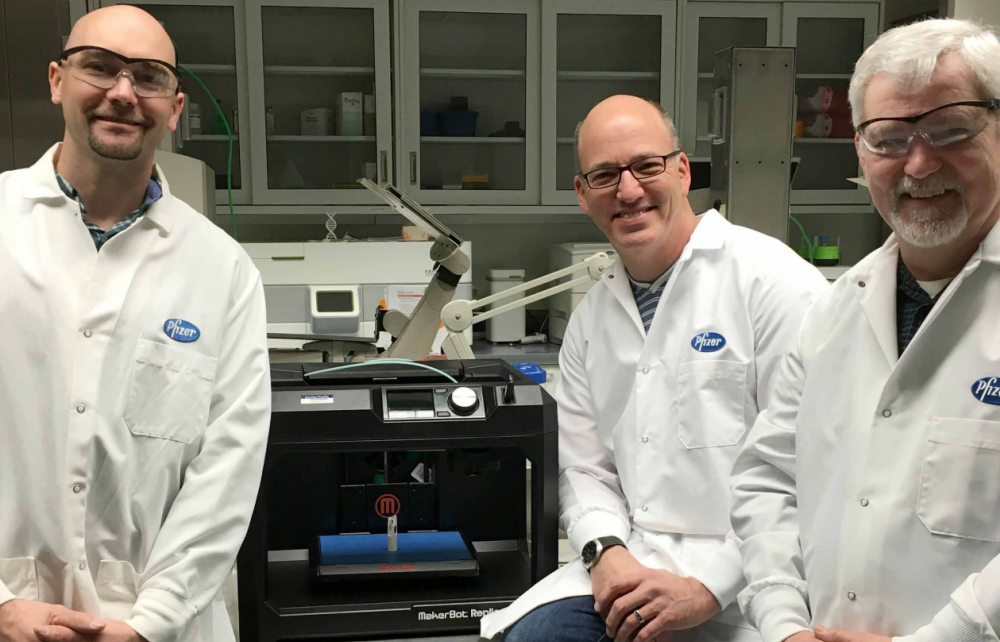PFIZER SCIENTISTS TURN TO MAKERBOT TO STREAMLINE ARTHRITIS TREATMENT RESEARCH
Posted by Jacqui Adams on
Taken from 3D Print.
by
I have a sort of fascination with what most people would consider mundane uses for 3D printing. You show me some 3D printed knobs for a stove or a 3D printed clip for a backpack and I want to know everything about it. It isn’t so much that mundane things are especially interesting to me, but when 3D printing is used for things that seem simple or boring, I think it reveals what is truly amazing about the technology. Just like anyone, I’m excited when I read about 3D printed components finding their way into rockets, the latest Hollywood blockbusters making magic with 3D printed costumes and props and cosplayers recreating that Hollywood magic. But the real potential of 3D printing isn’t big and flashy, or really even all that exciting. No, the real potential is when it is used as a tool in service of making something else that can be called amazing.
I think it would be mathematically impossible to find someone who hasn’t used a product developed byPfizer. As one of the largest global pharmaceutical corporations they have developed everything from common over the counter medications to highly specialized, life-saving medical treatments. If you’ve taken Advil, Centrum, Lyrica, Zoloft, Celebrex, or used an EpiPen then you’ve used a Pfizer product. The development of drugs and medications are some of the most tightly regulated industries in the world, so making mistakes is something that is really frowned upon and any research into the development of pharmaceuticals is both exacting and extremely controlled.
Laboratories that are developing the next generation of life-saving drugs probably isn’t the first place that you would expect to find a 3D printer. but it turns out that Pfizer Global Research and Development scientists David Zakur and Edwin Berryman relied heavily on a MakerBot to help them research and test a new line of osteo and rheumatoid arthritis medications. The pair work in Pfizer’s Comparative Medicine Department working on new treatments for diseases that affect bones, cartilage and joints, like arthritis. There are over one hundred different varieties of arthritis that affect 350 million people in the world, almost forty million of them in the United States alone.
As the world’s populations start to live longer, the numbers of people who suffer from arthritis are only expected to increase, and there is a growing demand for treatments and medications. The research being done by Zakur and Berryman requires them to test various treatments on 1.5-centimeter-long arthritic rat bones to see how they react. It is an important early step in the development cycle of a new drug, and a requirement before human trials can be approved. In order to track the reactions in the rat bones, they need to obtain very high resolution scans of the cartilage tissue. The problem is, in order to accurately track the reactions, every single sample bone needs to be in the exact same position when it is scanned a second time after being exposed to a special dye that will reveal data about the effects of the treatment.
Share this post
- Tags: 3d printing, Makerbot

